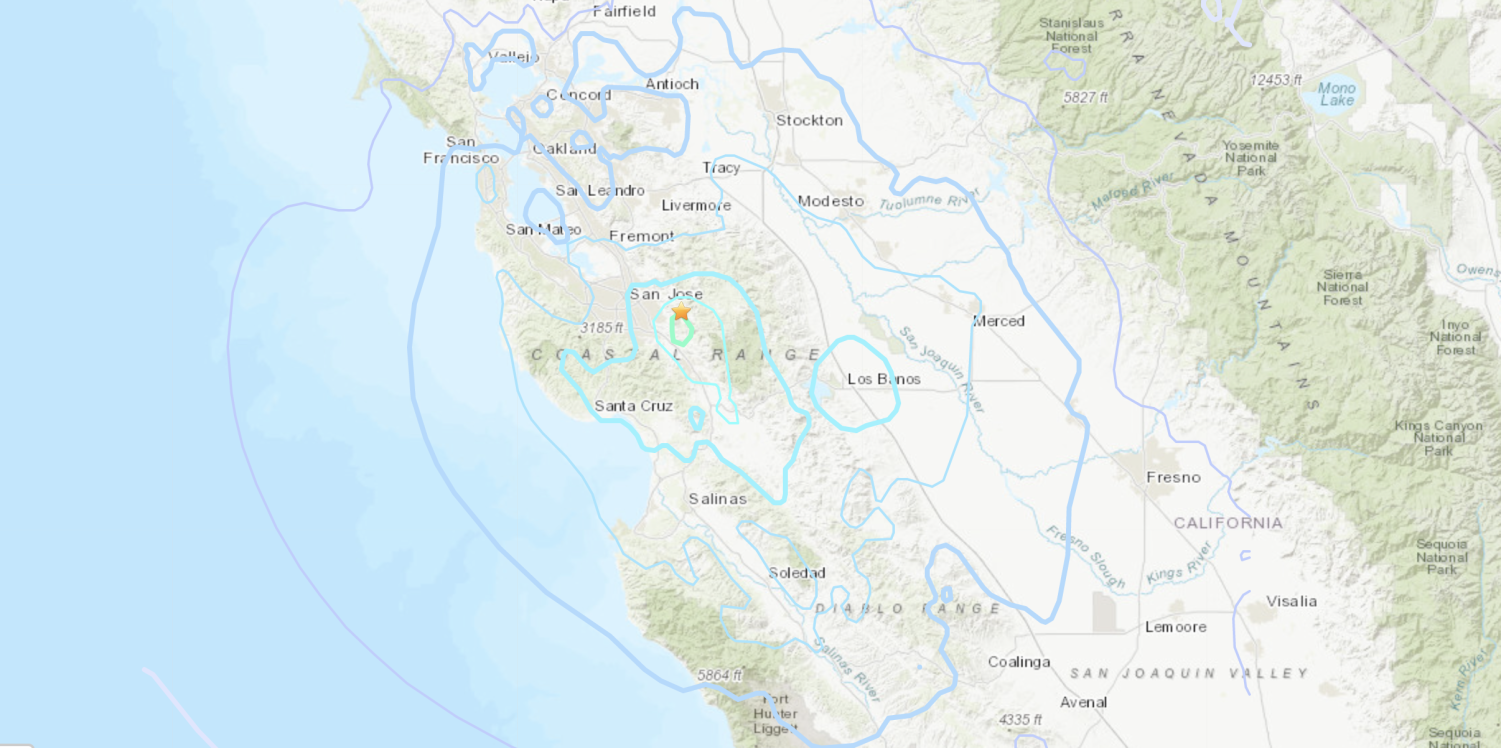
Magnitude 5.1 earthquake shakes the Bay Area, SF State
Despite being felt across various cities, the quake did not cause any reported injuries or damage.
Oct 25, 2022
At 11:42 a.m., a magnitude 5.1 earthquake struck near the Seven Trees neighborhood of San Jose. The quake was felt around the Bay Area, including SF State.
The initial earthquake was followed by a magnitude 3.1 aftershock at 11:47 a.m.
According to the United States Geological Survey, people felt the shaking in several major cities including San Jose, San Francisco, Sacramento, Fresno and Oakland. The USGS reported that there is a low likelihood of any casualties or damage.
SF State student Ethan Torres was in the library when the earthquake began.
“When it hit, the lights began shaking and the desk began shaking,” Torres said. “I honestly didn’t think it was an earthquake, but as it kept continuing I was like, ‘okay, this is definitely an earthquake.'”
The earthquake also caused BART delays and all of the trains were stopped for track inspections. Service is already clear for normal operations, however, trains are currently delayed by three to 18 minutes.
According to SF State’s University Police Department, there have been no reports of any injuries or damages related to the earthquake.
SF State professor John Caskey, who specializes in the studies of neotectonics and seismotectonics, does not believe that Tuesday’s earthquake will increase the risk of a larger quake in the near future.
“It’s not really big enough,” Caskey said. “If it was a magnitude 6, I would start thinking that maybe there’s enough oomph, but not a magnitude 5. That’s just my gut feeling.”
However, according to Caskey, historical earthquake patterns suggest that a large earthquake in the Bay Area is an impending threat. While the San Andreas Fault is often speculated to produce “the big one,” he believes the Hayward Fault—which runs through Oakland and Berkeley—actually poses the most immediate risk.
“The Hayward Fault is the one that, based on all the geologic data that we’re able to provide, has the highest probability of rupturing of all the Bay Area faults because it’s been the longest since it has ruptured,” Caskey said. “The historical earthquakes on the Hayward [Fault] have been pretty big.”
The SF State Office of Emergency Services offers information about what students and faculty can do to be prepared for a large earthquake.
Editors Note: This article is subject to change as the story develops.


